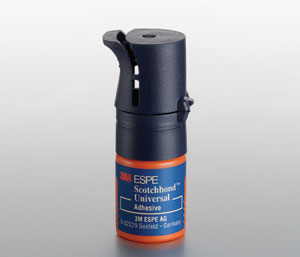Home › Forums › Adhesive dentistry › ETCHING AND ITS IMPORTANCE IN ADHESIVE DENTISTRY
Welcome Dear Guest
To create a new topic please register on the forums. For help contact : discussdentistry@hotmail.com
- This topic has 4 replies, 5 voices, and was last updated 29/01/2012 at 5:29 pm by
smilesbyveeren@gmail.com.
-
AuthorPosts
-
22/12/2010 at 3:41 pm #9838
Anonymous
OnlineTopics: 0Replies: 1151Has thanked: 0 timesBeen thanked: 2 timesAdhesion to tooth structure by composite restorations is achieved by means of acid etching.Acid etching causes roughening of the surface leading to formation of microporosities into which the composite will bond micromechanically.However it is important that we do not forget the significance of this acid-etching and the correct method of doing so. Here are a few things to keep in mind while acid etching.
Acid etching of tooth surface is achieved by applying PHOSPHORIC ACID on the required tooth surfaces. This acid used is of 37%conc. and applied for 15 seconds since any amount of time beyond this would produce the same amount of roughness.Nowadays instead of the liquid etchant gel etchants are widely available which are more viscous and more user friendly.After gel application the surfaces should be thoroughly washed n dried to achieve a frosty appearance.
The most important thing that one should remember is that though many dentinal adhesives are now available, etching dentin is not as reliable as etching enamel because:
*Dentin is a dynamic tissue.
*It consists of considerable amount of organic tissue compared to enamel.
*It has close proximity to pulp tissue
Hence one must be very careful when etching dentin.As far as possible etching must be restricted to enamel, this is because too much etching or drying can lead to collapse of the collagen fibrils present in the tubules, this further can lead to failure of the restoration due to microleakage and hence secondary caries.A guideline for the critical steps in dentin bonding would be:
-Adequate isolation to avoid salivary contamination and interference in the micromechanical bonding.
-Adequate pulp protection especially in deep cavities.
-Acid etching for optimum time of 15 secs with 37%conc. phosphoric acid.
-Avoid over-drying of the dentinal tubules.
-Appropriate application of selected bonding agent.26/12/2010 at 10:45 am #14452sushantpatel_doc
OfflineRegistered On: 30/11/2009Topics: 510Replies: 666Has thanked: 0 timesBeen thanked: 0 times27/12/2010 at 2:47 pm #14453Anonymous
The best property of composite is its ability of micromechanical adhesion, unlike amalgam, depth isnt a factor for retention…retention depends on etching,bonding and most importantly beveling.
Hence, just removal of caries is sufficient for retention,what one should concentrate on is the technique,isolation as well as incorporation of bevels.29/01/2012 at 4:58 pm #15109 drsushant
OfflineRegistered On: 14/05/2011Topics: 253Replies: 277Has thanked: 0 timesBeen thanked: 0 times
drsushant
OfflineRegistered On: 14/05/2011Topics: 253Replies: 277Has thanked: 0 timesBeen thanked: 0 timesScotchbond Universal Adhesive is a single-bottle adhesive with a forgiving technique that offers versatile solutions for direct and indirect restorations. With Scotchbond Universal adhesive, dentists now have an easy-to-use, single-bottle solution that provides uncompromising results for all surfaces in total- or self-etch mode
 29/01/2012 at 5:29 pm #15111
29/01/2012 at 5:29 pm #15111smilesbyveeren@gmail.com
OfflineRegistered On: 31/03/2020Topics: 34Replies: 174Has thanked: 0 timesBeen thanked: 0 timesThe best property of composite is its ability of micromechanical adhesion, unlike amalgam, depth isnt a factor for retention…retention depends on etching,bonding and most importantly beveling.
Hence, just removal of caries is sufficient for retention,what one should concentrate on is the technique,isolation as well as incorporation of bevels.
hi,
I think there must a depth of at least 2.5 to 3 mm or perhaps even more for a composite filling to be retentive. Dr. Gordo Christensen also recommends creating undercuts. If there is not sufficient depth then there will be no strength to the filling. Beveling in posterior composite restorations is a controversial topic.
If the caries are incipient then you could use fissurotomy burs and in case if the caries is superficial and not very broad you could flow flowable composite or selants and cure it. But the caries must be very superficial for this to succeed.
Regards,
Veerendra darakh
-
AuthorPosts
- You must be logged in to reply to this topic.